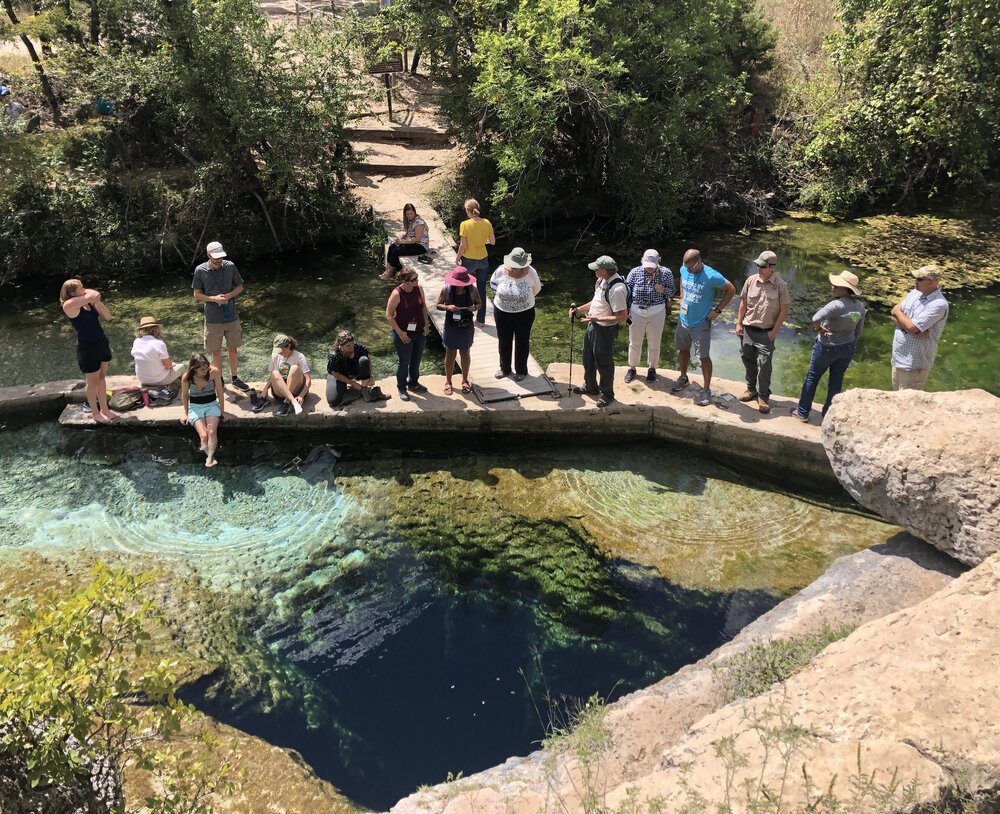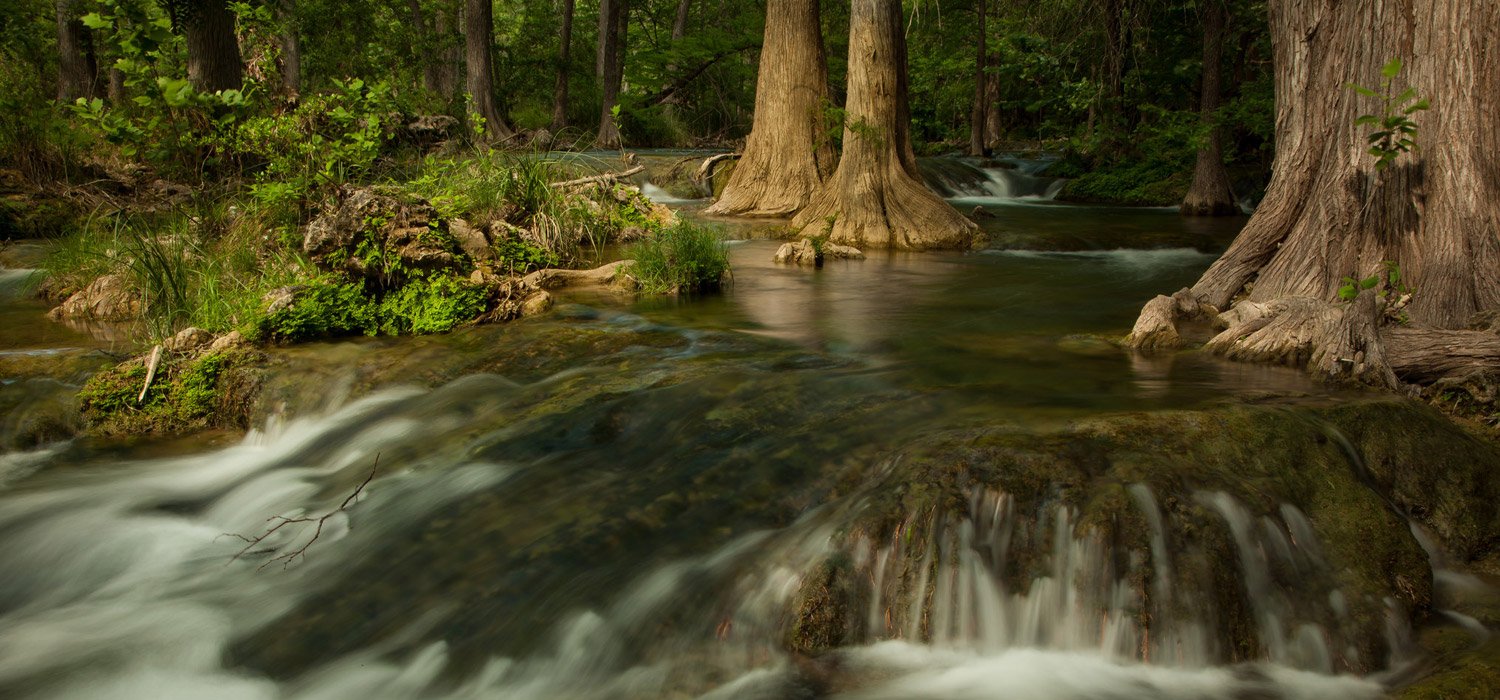Water is Life…
The rapid growth of the Hays County area is increasing the burden upon this valuable resource. Understanding our water supply and how it effects the land helps us to make better water management decisions.
Where Does Our Water Come From?
The continuous water cycle starts with rain. Of the rain that falls on the land, 89% of it either evaporates directly to the atmosphere or processed through transpiration in plants into the atmosphere. The remaining 11% seeps into the ground or runs off as surface water to rivers and streams. Of the water on the earth’s surface, 97% of it is saltwater and 1-2% is frozen glaciers, ice, and snow around the world. That leaves about 1% of water available for consumption.
Watersheds: Our Lakes, Rivers & Streams
Watersheds are basin-like landforms defined by highpoints and ridgelines that descend into lower elevations and stream valleys. A watershed, sometimes called a drainage basin or catchment, carries water “shed” from the land after rain falls and snow melts.
Erosion and Runoff
Soil erosion via water flow is a significant issue in Hays County and in all of the Texas Hill Country. Our geology with the limestone base and relatively thin soil makes it difficult for rain to soak in quickly.
Water Features for Wildlife
Water attracts wildlife and is great for plants. While not everyone can live near a river or lake, everyone has the option of building a water feature. In this article we will cover how to make a small wildlife pond or water feature that can be maintained year-round with only rainwater.
Capturing Water
If you live in the Wimberley Valley, your property is part of the Blanco River Watershed. But “watershed” is a misleading way to describe it. The word implies getting water off the land as quickly as possible. Instead we should re-conceptualize our valley as a “water catchment area.” This term, used by most of the rest of the world, suggests capturing water before it flows downstream.
Rainwater Collection: an alternative to a well
Rainwater is quickly replacing well water for whole-house and irrigation use throughout the Hill Country. Rainwater catchment and distribution system pricing is comparable to a well and can be a more reliable and a higher-quality source than groundwater taken from an aquifer.
Saving Water
Water and the Texas Hill Country enjoy an intimate but challenged relationship. Water makes our area beautiful and prosperous, but we often don’t have enough of it, especially deep in Hays County’s struggling water source; the Trinity Aquifer.
Reduce River Refuse
Rivers are among Hays County’s best features. Unfortunately, every time a heavy rain comes, large quantities of litter wash down our streams. Below is a list of ways you can help to reduce the trash that flows down the rivers and gets caught on the banks. Don’t be overwhelmed- even doing just one thing on this list can make a difference!









